Kocaín Mağarası
Useful Information
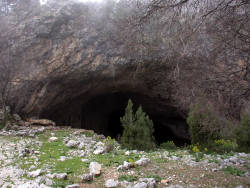
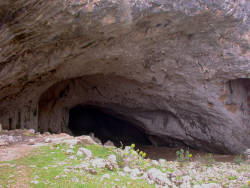
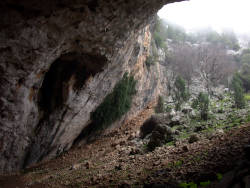
| Location: |
Ahırtaş, 07190 Kızılseki/Döşemealtı/Antalya.
D650 Antalya-Burdur, at Selimiye turn right through Karatas, Ilıcaköy, Camili, Killik. There is a single lane road to the cave entrance. (37.2325329, 30.7113959) |
| Open: |
no restrictions. [2024] |
| Fee: |
free. [2024] |
| Classification: |
 Karst Cave Karst Cave
|
| Light: | none, bring torches, floodlight, as much and strong as possible..... |
| Dimension: | L=633 m, W=100 m, H=80 m. Portal: W=75 m, H=20 m. |
| Guided tours: | self guided |
| Photography: | allowed |
| Accessibility: | no |
| Bibliography: |
Matthew Jacobson, Pascal Flohr, Alison Gascoigne, Melanie Leng, Aleksey Sadekov, Hai Cheng, R. Edwards, Dominik Fleitmann (2021): Heterogenous Late Holocene Climate in the Eastern Mediterranean—The Kocain Cave Record From SW Turkey Geophysical Research Letters. 48. researchgate DOI Ali Yamaç (1990): Kocain Mağarasının Keşfi ve Araştırma Tarihi Conference: 1. Speleoloji Sempozyumu researchgate 
|
| Address: | |
| As far as we know this information was accurate when it was published (see years in brackets), but may have changed since then. Please check rates and details directly with the companies in question if you need more recent info. |
|
History
| 1919 | (re-)discovered by Guiseppe Moretti. |
| 1946 | beginning of archaeological exploration by Prof. Dr. Í. Kiliç Kökten. |
| 1972 | first speleological exploration by Dr. Temuçín Aygen in cooperation with French speleologists. |
| 1990 | declared a 1st degree Archaeological Site. |
| 16-AUG-2013 | declared a Natural Monument. |
Description
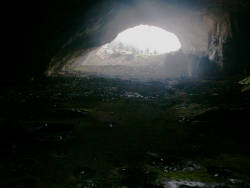
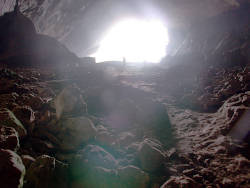
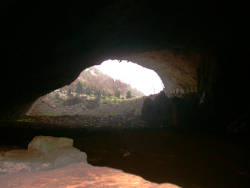
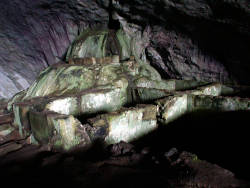
We were not sure if we should add this cave to showcaves.com. The cave is not gated, and to protect it, we are not really interested in publishing much about it. On the other hand, it is probably the most impressive cave one can visit while staying at the Turkish Riviera, and it is shown in maps, listed in internet pages and even mentioned in guidebooks. So we decided to try to add some practical information, some security issues and some environmental thoughts to what is already available.
Kocaín Mağarası is the most important cave of the area. It has been inhabited during prehistoric times and again during Byzantine and early Christian time. The cave had a religious function during early Christian times. Then it was forgotten and rediscovered at the beginning of the 20th century. There are various inscriptions and cave paintings inside the cave, but the most impressive archaeological remains are the basements of various houses in front of the cave and some cisterns inside the entrance.
The archaeological excavation started in 1946. Prof. Dr. Í. Kiliç Kökten from the Department of Prehistory at the University of Ankara excavated at the cave for several years. It took until 1972 that the cave was first explored by speleologists. The reason is obvious, Turkey had no infrastructure of cavers, cave exploration was developed very late. The first exploration was made by a team of French cavers, accompanied by Dr. Temuçín Aygen.
The cave is really huge. The entrance is 70 m wide and 20 m high, with a steep slope down into the entrance hall. This huge passage is probably 200 m long, with level floor an up to 50 m high ceiling. At the end of this chamber, at the cisterns, the cave turns to the left, the floor going downwards continually. The cave is in total 633 m long, and this second passage is as big as the entrance passage and 80 m high. There are numerous huge stalagmites, about 20 m high, which are merely dark shadows against the last remains of daylight from the entrance.
The cave is rather easy to visit. Good shoes, and most important a lot of light are essential. Because of the enormous size, smartphones or mini torches are not a good idea. Although it is possible to see the path with those lights, it is impossible to see much of the cave. However, the light from the entrance is visible almost to the end of the cave, and so it is rather hard to get lost.
The cave has little speleothems, despite the huge stalagmites, but there are places where the floor is covered by flowstone. At some places there are rimstone pools, and sometimes here are patches of cave coral.
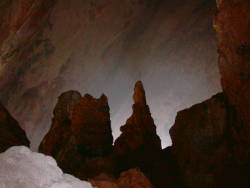
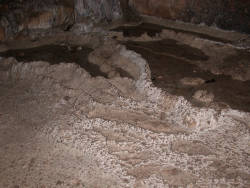
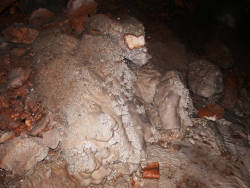
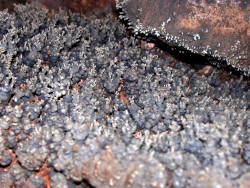
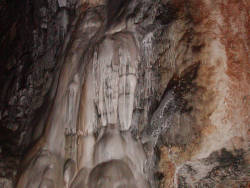
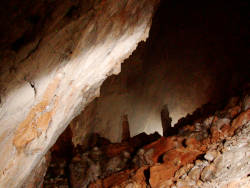
 Search DuckDuckGo for "Kocain cave"
Search DuckDuckGo for "Kocain cave" Google Earth Placemark
Google Earth Placemark OpenStreetMap
OpenStreetMap Kocain Cave - Wikipedia (visited: 22-NOV-2024)
Kocain Cave - Wikipedia (visited: 22-NOV-2024) Kocain Cave (Kocain Mağarası) (visited: 22-NOV-2024)
Kocain Cave (Kocain Mağarası) (visited: 22-NOV-2024) Index
Index Topics
Topics Hierarchical
Hierarchical Countries
Countries Maps
Maps